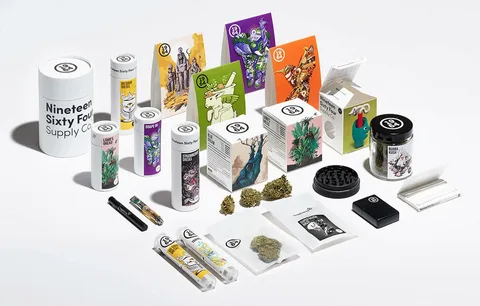As the legal marijuana industry continues to flourish, packaging has emerged as a crucial factor in product differentiation, compliance, and consumer appeal. Effective marijuana packaging not only protects the product but also adheres to regulatory requirements while enhancing the overall user experience. Below, we explore the best practices, trends, and innovations shaping this unique market.
1. The Importance of Marijuana Packaging
Marijuana packaging serves several essential purposes, from preserving product integrity to reinforcing brand identity. Key objectives include:
- Product preservation: Protects cannabis from light, moisture, and air to maintain potency and freshness.
- Regulatory compliance: Ensures adherence to local laws regarding child resistance, labeling, and tamper-proofing.
- Brand representation: Communicates the product’s quality, uniqueness, and appeal to target consumers.
- Sustainability: Addresses growing consumer demand for environmentally conscious options.
2. Regulatory Requirements for Marijuana Packaging
Compliance is a cornerstone of cannabis packaging. Regulations vary by region but generally encompass the following key areas:
Child-Resistant Packaging
Packaging must prevent access by children. This often involves tamper-proof mechanisms, resealable closures, or certified designs that meet specific safety standards.
Proper Labeling
Labels must clearly display essential information, such as:
- Product type and strain.
- THC/CBD concentrations.
- Usage instructions and warnings.
- Expiry dates and batch numbers.
Opaque or Non-Transparent Materials
Many jurisdictions mandate opaque packaging to obscure the contents from view, ensuring discretion and minimizing exposure to minors.
Tamper-Evident Seals
Seals that reveal when a package has been opened are critical for consumer safety and trust.
3. Trends in Marijuana Packaging
In this fast-evolving industry, trends are shaping how brands connect with their audience. Here are some prominent movements:
Sustainable Packaging
Eco-friendly marijuana packaging is gaining traction as consumers prioritize environmental impact.
- Biodegradable materials: Plant-based plastics and recycled cardboard are popular options.
- Reusable containers: Glass jars or metal tins encourage sustainability and product reuse.
- Minimalist designs: Reduce excess materials while maintaining a sleek, modern aesthetic.
Custom Branding
Custom designs allow cannabis brands to stand out in a crowded market. Popular strategies include:
- Vibrant artwork: Reflecting strain types or brand personalities.
- Unique typography: Bold fonts for modern appeal or script for artisanal vibes.
- Embossed logos: Add a premium touch that exudes quality.
Premium Packaging for Luxury Products
High-end cannabis products demand sophisticated packaging that matches their quality. Luxury packaging often incorporates:
- Glass containers with metallic accents.
- Velvet-lined boxes for edibles or concentrates.
- Custom holographic finishes for exclusivity.
4. Types of Marijuana Packaging
Different product forms require tailored packaging solutions. Here are some common options:
Flower Packaging
Cannabis flowers are often stored in airtight jars, resealable bags, or glass containers to maintain freshness and prevent contamination.
Concentrate Packaging
Dabs, waxes, and oils need specialized packaging to protect their texture and potency. Silicone jars and small glass containers are common choices.
Edible Packaging
Marijuana edibles like gummies, chocolates, and beverages are packaged in child-proof boxes, wrappers, or bottles with clear dosage labeling.
Pre-Roll Packaging
Pre-rolled joints are typically housed in child-resistant tubes or custom cartons, ensuring portability and freshness.
5. Innovations in Marijuana Packaging
With technological advancements, marijuana packaging is evolving rapidly. Here are some cutting-edge developments:
Smart Packaging
- QR codes: Provide instant access to product information, such as lab test results or strain details.
- Near-field communication (NFC): Adds interactivity, allowing users to verify authenticity or access exclusive promotions.
Odor-Proof Packaging
Specialized materials block cannabis odors, ensuring discretion during storage and transport.
UV-Resistant Containers
UV-resistant materials prevent degradation of cannabinoids caused by light exposure, extending product shelf life.
6. Best Practices for Marijuana Packaging Design
Creating effective packaging involves balancing functionality, compliance, and aesthetics. Here are some tips:
- Prioritize functionality: Use materials that preserve product quality and ensure ease of use.
- Stay compliant: Regularly update packaging to meet changing regulations in your market.
- Reflect your brand: Design packaging that resonates with your target audience, whether they value luxury, sustainability, or affordability.
- Test designs: Ensure child-proof mechanisms and tamper seals are user-friendly for adults while secure for children.
Conclusion
Marijuana packaging plays a vital role in product success, combining compliance, functionality, and design to enhance customer trust and brand loyalty. Whether you focus on sustainability, luxury appeal, or innovative technology, Your Box Packaging should align with your target audience’s values and expectations.

